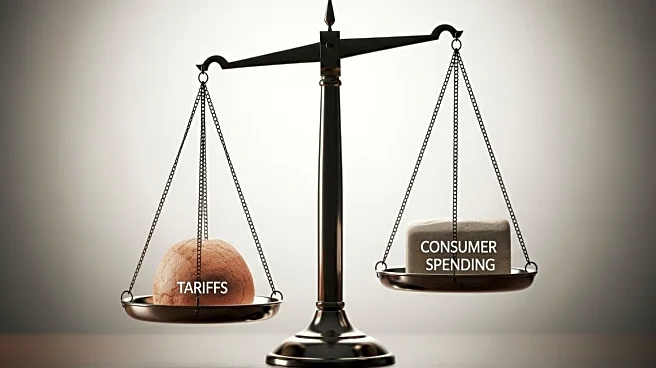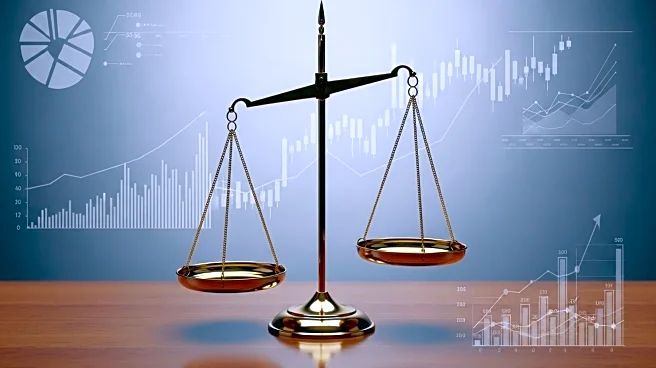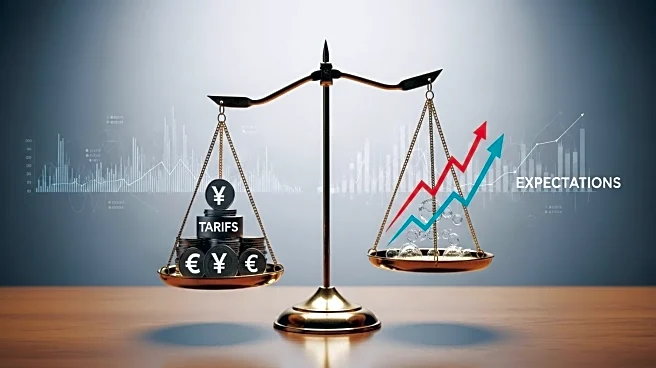What's Happening?
The latest inflation data reveals persistent price increases, posing a challenge for the Federal Reserve as it aims to stabilize the economy. The Personal Consumption Expenditures (PCE) data shows a 2.6% annual inflation rate in July, with consumer spending rising by 0.5%. Despite ongoing spending, consumers are making trade-offs due to economic uncertainty. Analysts warn that tariffs may exacerbate inflation in the coming months, impacting real income and consumer spending.
Why It's Important?
The ongoing inflation affects various economic stakeholders, including consumers, businesses, and policymakers. High inflation can erode purchasing power, leading to cautious spending and potential economic slowdown. The Federal Reserve's ability to manage inflation is crucial for maintaining economic stability and supporting job growth. Tariffs could further complicate the inflation landscape, affecting trade and consumer prices.
What's Next?
The Federal Reserve is expected to consider interest rate cuts in upcoming meetings to address inflation and support economic growth. Analysts predict rate cuts in September, October, and December, aiming to ease financial pressures on consumers and businesses. The impact of tariffs on inflation will be closely monitored, influencing future monetary policy decisions.
Beyond the Headlines
The inflation scenario highlights broader economic challenges, including the balance between monetary policy and fiscal measures. The role of tariffs in shaping economic outcomes underscores the interconnectedness of global trade and domestic economic policies. Long-term strategies may be needed to address structural economic issues and ensure sustainable growth.











